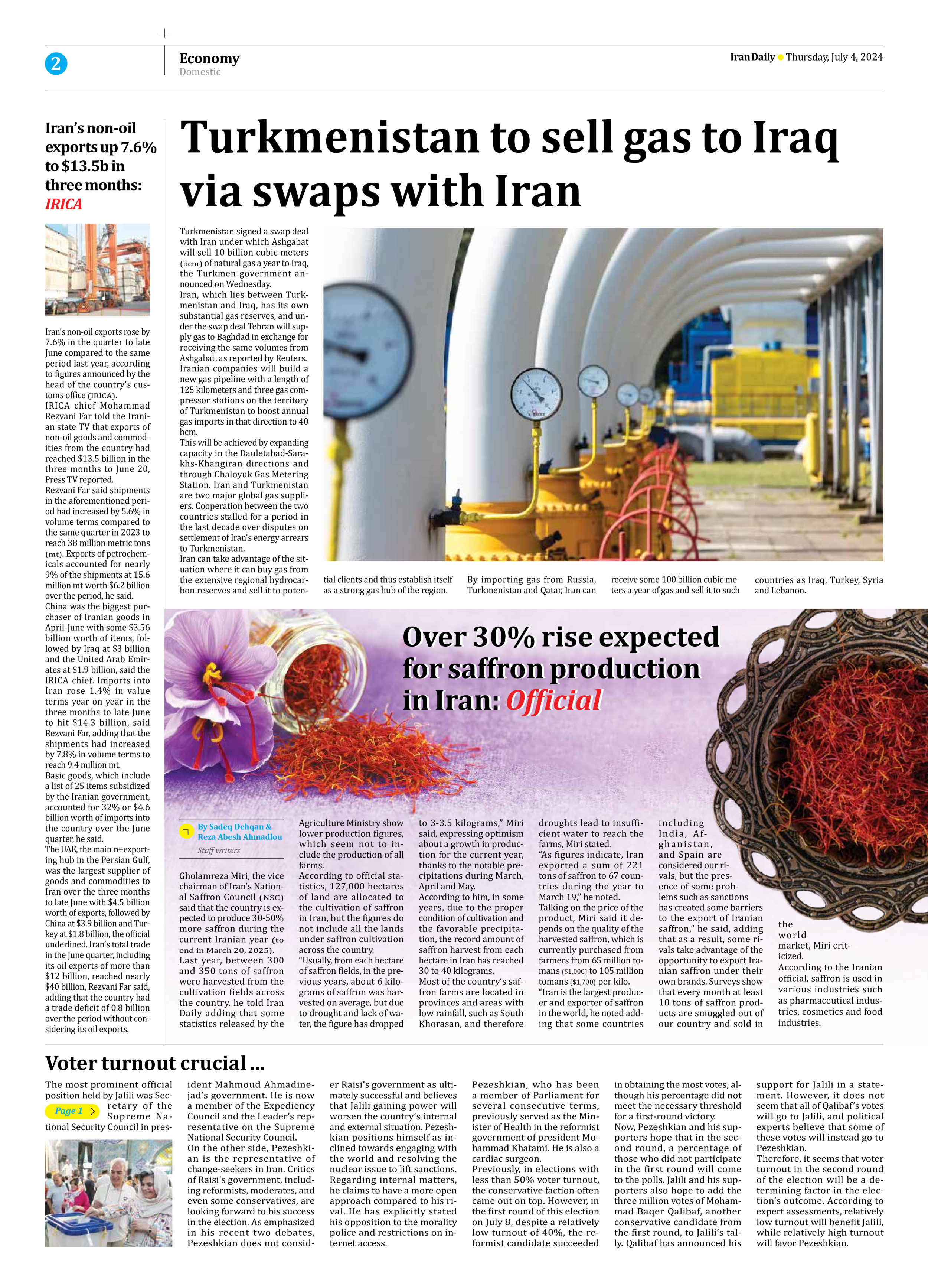
Over 30% rise expected for saffron production in Iran: Official
By Sadeq Dehqan &
Reza Abesh Ahmadlou
Staff writers
Gholamreza Miri, the vice chairman of Iran’s National Saffron Council (NSC) said that the country is expected to produce 30-50% more saffron during the current Iranian year (to end in March 20, 2025).
Last year, between 300 and 350 tons of saffron were harvested from the cultivation fields across the country, he told Iran Daily adding that some statistics released by the Agriculture Ministry show lower production figures, which seem not to include the production of all farms.
According to official statistics, 127,000 hectares of land are allocated to the cultivation of saffron in Iran, but the figures do not include all the lands under saffron cultivation across the country.
“Usually, from each hectare of saffron fields, in the previous years, about 6 kilograms of saffron was harvested on average, but due to drought and lack of water, the figure has dropped to 3-3.5 kilograms,” Miri said, expressing optimism about a growth in production for the current year, thanks to the notable precipitations during March, April and May.
According to him, in some years, due to the proper condition of cultivation and the favorable precipitation, the record amount of saffron harvest from each hectare in Iran has reached 30 to 40 kilograms.
Most of the country’s saffron farms are located in provinces and areas with low rainfall, such as South Khorasan, and therefore droughts lead to insufficient water to reach the farms, Miri stated.
“As figures indicate, Iran exported a sum of 221 tons of saffron to 67 countries during the year to March 19,” he noted.
Talking on the price of the product, Miri said it depends on the quality of the harvested saffron, which is currently purchased from farmers from 65 million tomans ($1,000) to 105 million tomans ($1,700) per kilo.
“Iran is the largest producer and exporter of saffron in the world, he noted adding that some countries including India, Afghanistan, and Spain are considered our rivals, but the presence of some problems such as sanctions has created some barriers to the export of Iranian saffron,” he said, adding that as a result, some rivals take advantage of the opportunity to export Iranian saffron under their own brands. Surveys show that every month at least 10 tons of saffron products are smuggled out of our country and sold in
the world market, Miri criticized.
According to the Iranian official, saffron is used in various industries such as pharmaceutical industries, cosmetics and food
industries.







